A personal journey to start-up through the books that informed and inspired me; covering strategy, digital transformation, marketing, self-motivation and getting things done.
As any entrepreneur will tell you, the journey to start-up and beyond is a roller coaster of learning, experimentation, new insights and pivots not to mention hard work, perseverance and the need to focus. It’s a journey which for me has been punctuated by some exceptional books all of which have had their part to play and which I hope you will find useful too.
Listed in chronological order and starting ironically enough with Simon Sinek’s Start With Why purchased in August 2012, these are the books that have been most pivotal on my journey to launching The Digital Transformation People in January 2016 through to now.
I’ve tried to pick a top 3 but quite honestly can’t .. contact me and I’ll tell you my top 5 and please do let me know your recommendations too.
 |
Start With Why: How Great Leaders Inspire Everyone To Take Action by Simon Sinek
Why are some people and organisations more inventive, pioneering and successful than others? And why are they able to repeat their success again and again? In business, it doesn’t matter what you do, it matters WHY you do it. Start with Why analyses leaders like Martin Luther King Jr and Steve Jobs and discovers that they all think in the same way – they all started with why. Simon Sinek explains the framework needed for businesses to move past knowing what they do to how they do it, and then to ask the more important question-WHY? Why do we do what we do? Why do we exist? Learning to ask these questions can unlock the secret to inspirational business. Sinek explains what it truly takes to lead and inspire and how anyone can learn how to do it. |
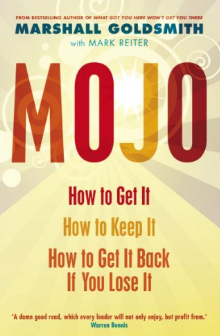 |
Mojo: How to Get It, How to Keep It, How to Get It Back If You Lose It by Marshall Goldsmith
Goldsmith draws on new research, as well as his extensive experience with corporate teams and top executives, to provide compelling case studies throughout. Readers will learn the 26 powers that are within us all and will come away with a new, hyper-effective technique to define, track and ensure future success for themselves and their organisations. |
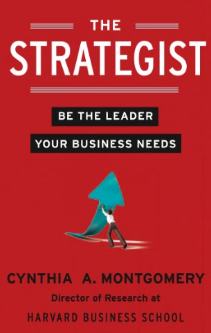 |
The Strategist: Be the Leader your Business needs by Cynthia A Montgomery
Cynthia Montgomery reveals how leaders can embrace the crucial role of The Strategist to really define and drive the objectives and advantages to power their companies forward. Based on her legendary strategy course, one of the most oversubscribed executive courses at Harvard Business School, Cynthia Montgomery offers a radically new perspective on a leader’s most vital role. Montgomery’s course teaches seasoned executives, owners and CEOs a totally new way to understand how to lead with vision and values, a way that fuses leadership with strategy. She shows that strategy is not just a tool for outwitting the competition – it is the most powerful means a leader has for shaping a firm itself. Montgomery takes the readers through the paces of her world-renowned course, teaching them how to develop the skills and sensibilities that living strategy and real leadership demand. No other book marries strategy and leadership in the same way – a way readers will find challenging, intriguing, and ultimately, inspiring. |
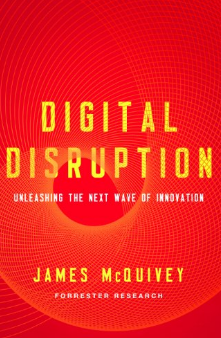 |
Digital Disruption: Unleashing the Next Wave of Innovation
You always knew digital was going to change things, but you didn’t realize how close to home it would hit. In every industry, digital competitors are taking advantage of new platforms, tools, and relationships to undercut competitors, get closer to customers, and disrupt the usual ways of doing business. The only way to compete is to evolve. James McQuivey of Forrester Research has been teaching people how to do this for over a decade. He’s gone into the biggest companies, even in traditional industries like insurance and consumer packaged goods, and changed the way they think about innovation. Now he’s sharing his approach with you. |
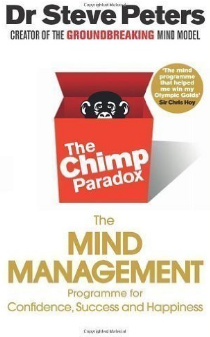 |
The Chimp Paradox: The Mind Management Programme to Help You Achieve Success, Confidence and Happiness by Dr Steve Peters The Chimp Paradox is an incredibly powerful mind management model that can help you become a happy, confident, healthier and more successful person. Prof Steve Peters explains the struggle that takes place within your mind and then shows how to apply this understanding to every area of your life so you can:– Recognise how your mind is working – Understand and manage your emotions and thoughts – Manage yourself and become the person you would like to beWebsite |
 |
The Everything Store: Jeff Bezos and the Age of Amazon by Brad Stone
Winner of the 2013 Financial Times and Goldman Sachs Business Book of the Year Award. |
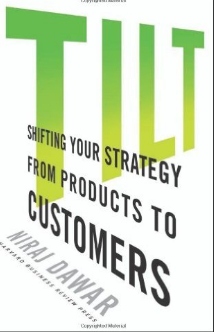 |
Tilt: Shifting your Strategy from Products to Customers by Niraj Dawar
Shift your strategy downstream. Why do your customers buy from you rather than from your competitors? If you think the answer is your superior products, think again. Products are important, of course. For decades, businesses sought competitive advantage almost exclusively in activities related to new product creation. They won by building bigger factories, by finding cheaper raw materials or labour, or by coming up with more efficient ways to move and store inventory–and by inventing exciting new products that competitors could not replicate. But these sources of competitive advantage are being irreversibly levelled by globalization and technology. Today, competitors can rapidly decipher and deploy the recipe for your product’s secret sauce and use it against you. “Upstream,” product-related advantages are rapidly eroding. This does not mean that competitive advantage is a thing of the past. Rather, its centre has shifted. As marketing professor Niraj Dawar compellingly argues, the advantage is now found “downstream,” where companies interact with customers in the marketplace. Tilt will help you grasp the global nature of this downstream shift and its profound implications for your strategy and your organization. With vivid examples from around the world, ranging across industries and sectors, Dawar shows how companies are reorienting their strategies around customer interactions to create and capture unique value. And he demonstrates how, unlike product-related advantage, this value is cumulative, continuously building over time. In an increasingly customer-centred world marketplace, let Tilt serve as your guide to shifting your strategy downstream–and achieving enduring competitive advantage. |
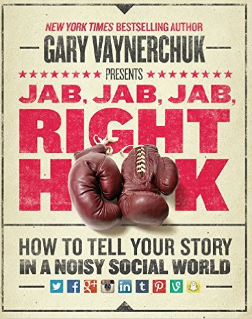 |
Jab, Jab, Jab, Right Hook: How to Tell Your Story in a Noisy Social World by Gary Vaynerchuk
When managers and marketers outline their social media strategies, they plan for the “right hook”—their next sale or campaign that’s going to knock out the competition. Even companies committed to jabbing—patiently engaging with customers to build the relationships crucial to successful social media campaigns—want to land the punch that will take down their opponent or their customer’s resistance in one blow. Right hooks convert traffic to sales and easily show results. Except when they don’t. Thanks to massive change and proliferation in social media platforms, the winning combination of jabs and right hooks is different now. Vaynerchuk shows that while communication is still key, context matters more than ever. It’s not just about developing high-quality content, but developing high-quality content perfectly adapted to specific social media platforms and mobile devices—content tailor-made for Facebook, Instagram, Pinterest, Twitter, and Tumblr. |
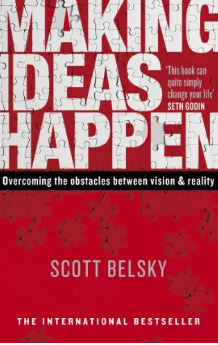 |
Making Ideas Happen: Overcoming the Obstacles Between Vision and Reality by Scott Belsky
Thomas Edison famously said that genius is 1% inspiration, 99% perspiration. Every day new solutions, revolutionary cures, and artistic breakthroughs are conceived and squandered by smart people. Along with the gift of creativity come the obstacles to making ideas happen: lack of organisation, lack of accountability and a lack of community support. Scott Belsky has interviewed hundreds of the most productive creative people and teams in the world, revealing one common trait: a carefully trained capacity for executing ideas. Implementing your ideas is a skill that can be taught, and Belshy distils the core principles in this book. While many of us obsess about discovering great new ideas, Belsky shows why it is better to develop the capacity to make ideas happen – using old-fashioned passion and perspiration. Making Ideas Happen reveals the practical yet counterintuitive techniques of ‘serial creatives’ – those few who make their visions a reality. |
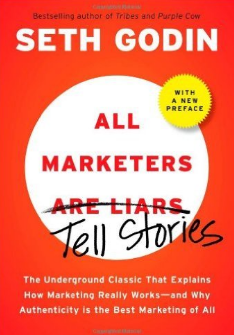 |
All Marketers are Liars: The Underground Classic That Explains How Marketing Really Works and Why Authenticity Is the Best Marketing of All by Seth Godin
Seth Godin asks three essential questions for every marketer: All marketers tell stories. And if they do it right, we believe them. We believe that wine tastes better in a $20 glass than a $1 glass. We believe that an $80,000 Porsche is vastly superior to a $36,000 Volkswagen that’s virtually the same car. |
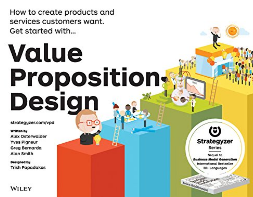 |
Value Proposition Design: How to Create Products and Services Customers Want by Alexander Osterwalder
The authors of the international bestseller Business Model Generation explain how to create value propositions customers can’t resist. Value Proposition Design helps you tackle a core challenge of every business — creating compelling products and services customers want to buy. This practical book, paired with its online companion, will teach you the processes and tools you need to succeed. |
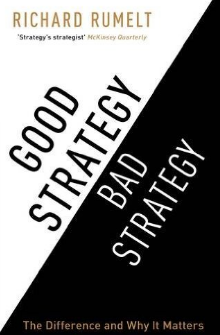 |
Good Strategy/Bad Strategy: The difference and why it matters by Richard Rumelt
Even though everyone is talking about it, there is no concept in business today more muddled than ‘strategy’. Richard Rumelt, described by McKinsey Quarterly as ‘a giant in the field of strategy’ and ‘strategy’s strategist’, tackles this problem head-on in a jargon-free explanation of how to develop and take action on strategy, in business, politics and beyond. Rumelt has always challenged dominant thinking, ever since, in 1972, he was the first person to uncover a statistical link between corporate strategy and profitability – and this is his long-awaited tour de force. |
 |
Leverage: High Leverage Activities = the Right Results Faster! by Tony Jeary
Leverage literally means using something to gain the maximum advantage. Because life moves so fast, most people end up getting mired down in tactical activities and don’t take the time to balance tactical with strategic to get the greatest benefit of both. Wouldn’t it be great if there was a formula for getting the most leverage out of your career to get the right results faster? |
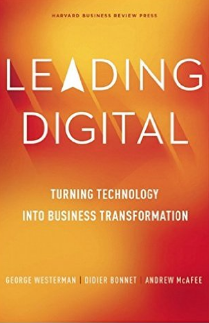 |
Leading Digital by George Westerman Become a Digital Master–No Matter What Business You’re In If you think the phrase “going digital” is only relevant for industries like tech, media, and entertainment–think again. In fact, mobile, analytics, social media, sensors, and cloud computing have already fundamentally changed the entire business landscape as we know it–including your industry. The problem is that most accounts of digital in business focus on Silicon Valley stars and tech start-ups. But what about the other 90-plus per cent of the economy? In Leading Digital, authors George Westerman, Didier Bonnet, and Andrew McAfee highlight how large companies in traditional industries–from finance to manufacturing to pharmaceuticals–are using digital to gain strategic advantage. They illuminate the principles and practices that lead to successful digital transformation. Based on a study of more than four hundred global firms, including Asian Paints, Burberry, Caesars Entertainment, Codelco, Lloyds Banking Group, Nike, and Pernod Ricard, the book shows what it takes to become a Digital Master. It explains successful transformation in a clear, two-part framework: where to invest in digital capabilities, and how to lead the transformation. Within these parts, you’ll learn: * How to engage better with your customers * How to digitally enhance operations * How to create a digital vision * How to govern your digital activities The book also includes an extensive step-by-step transformation playbook for leaders to follow. Leading Digital is the must-have guide to help your organization survive and thrive in the new, digitally powered global economy.Follow George Westerman |
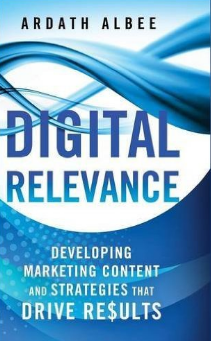 |
Digital Relevance: Developing Marketing Content and Strategies that Drive Results by A. Albee
Digital Relevance first elaborates on the mindset and strategic considerations that must accompany a successful transition to real-time marketing that will result in radical relevance. Throughout the book, each chapter focuses on the development of a skillset or tool that marketers will need to make this important transition. |
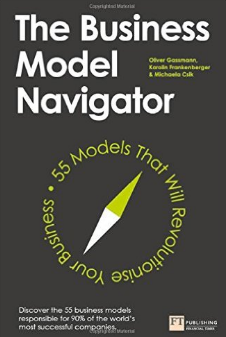 |
The Business Model Navigator: 55 Models That Will Revolutionise Your Business by Oliver Gassmann
A strong business model is a bedrock to business success. But all too often we fail to adapt, clinging to outdated models that are no longer delivering the results we need. The brains behind The Business Model Navigator have discovered that just 55 business models are responsible for 90% of the world’s most successful businesses. These 55 models – from the Add-On model used by Ryanair to the Subscription model used by Spotify – provide the blueprints you need to revolutionise your business and drive powerful change. As well as providing a practical framework for adapting and innovating your business model, this book also includes each of the 55 models in a quick-read format that covers:
|
 |
Hooked: How to Build Habit-Forming Products by Nir Eyal
Why do some products capture our attention while others flop? What makes us engage with certain things out of sheer habit? Is there an underlying pattern to how technologies hook us? Nir Eyal answers these questions (and many more) with the Hook Model – a four-step process that, when embedded into products, subtly encourages customer behaviour. Through consecutive “hook cycles,” these products bring people back again and again without depending on costly advertising or aggressive messaging. Hooked is based on Eyal’s years of research, consulting, and practical experience. He wrote the book he wished had been available to him as a start-up founder – not abstract theory, but a how-to guide for building better products. Hooked is written for product managers, designers, marketers, start-up founders, and anyone who seeks to understand how products influence our behaviour. Eyal provides readers with practical insights to create user habits that stick; actionable steps for building products people love; and riveting examples from the iPhone to Twitter, Pinterest and the Bible App. |
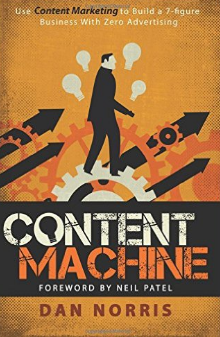 |
Content Machine: Use Content Marketing to Build a 7-figure Business With Zero Advertising by Dan Norris
Author Dan Norris shares his story of how he grew his WordPress support business from scratch to over $1m AUD annual run rate in 2 years, spending only $181.23 on advertising. The lessons learned to form a framework for building businesses and scaling content marketing, that are documented throughout Content Machine in terms any entrepreneur can understand. The book outlines the #1 biggest mistake that kills content marketing efforts and how the best content marketers in the world have built their audience, their content and their business. It provides downloads and frameworks to help the reader with every aspect of content marketing, from idea generation to writing guidelines, to hiring and scaling a content team. Whether you are a blogger, content marketer, entrepreneur or marketing manager, Content Machine will help you see the return you deserve from your content marketing efforts. |
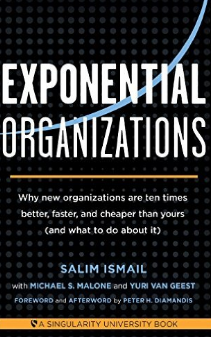 |
Exponential Organizations: Why new organizations are ten times better, faster, and cheaper than yours (and what to do about it) by Salim Ismail
In business, performance is key. In performance, how you organize can be the key to growth. In the past five years, the business world has seen the birth of a new breed of company-the Exponential Organization-that has revolutionized how a company can accelerate its growth by using technology. An ExO can eliminate the incremental, linear way traditional companies get bigger, leveraging assets like community, big data, algorithms, and new technology into achieving performance benchmarks ten times better than its peers. Three luminaries of the business world-Salim Ismail, Yuri van Geest, and Mike Malone-have researched this phenomenon and documented ten characteristics of Exponential Organizations. |
 |
Platform Revolution: How Networked Markets are Transforming the Economy–and How to Make Them Work for You by Geoffrey G. Parker and Marshall W. Van Alstyne
Facebook, PayPal, Alibaba, Uber-these seemingly disparate companies have upended entire industries by harnessing a single phenomenon: the platform business model. Platform Revolution delivers the first comprehensive analysis of how platforms use technology to match producers and consumers in a multisided marketplace, unlocking hidden resources and creating new forms of value. When a company like Uber connects drivers with passengers, everybody wins – except traditional taxi companies, which are scrambling to survive. Assumptions about operations, finance, strategy and innovation all change. Platform Revolution explores the what, how and why of this revolution and provides the first “owner’s manual” for creating a platform marketplace. Revealing the strategies behind some of today’s rising platforms, the authors explain how entrepreneurs-and traditional companies- can thrive in this new world. In cases as diverse as shoes, spices, dating, energy, home appliances and education, Platform Revolution provides the essential guide to unlocking the potential of an economic landscape transformed. Follow Geoffrey G. Parker |
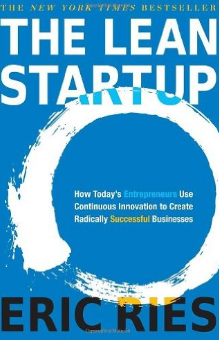 |
The Lean Startup by Eric Ries Eric Ries defines a startup as “an organization dedicated to creating something new under conditions of extreme uncertainty”. This is just as true for one person in a garage or a group of seasoned professionals in a Fortune 500 boardroom. What they have in common is a mission to penetrate that fog of uncertainty to discover a successful path to a sustainable business.The Lean Startup approach fosters companies that are both more capital efficient and that leverage human creativity more effectively. Inspired by lessons from lean manufacturing, it relies on “validated learning,” rapid scientific experimentation, as well as a number of counter-intuitive practices that shorten product development cycles, measure actual progress without resorting to vanity metrics, and learn what customers really want. It enables a company to shift directions with agility, altering plans inch by inch, minute by minute.Rather than wasting time creating elaborate business plans, The Lean Startup offers entrepreneurs – in companies of all sizes – a way to test their vision continuously, to adapt and adjust before it’s too late. Ries provides a scientific approach to creating and managing successful startups in an age when companies need to innovate more than ever.Follow Eric Ries |
Article by channel:
Everything you need to know about Digital Transformation
The best articles, news and events direct to your inbox
Read more articles tagged: Featured






